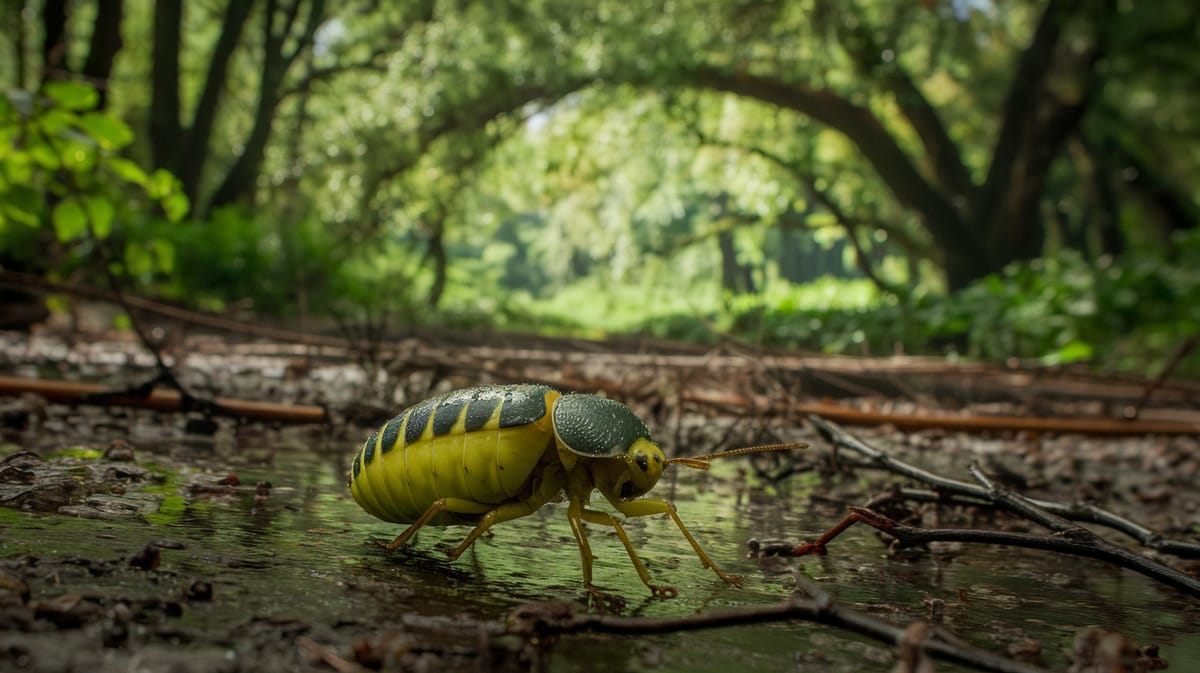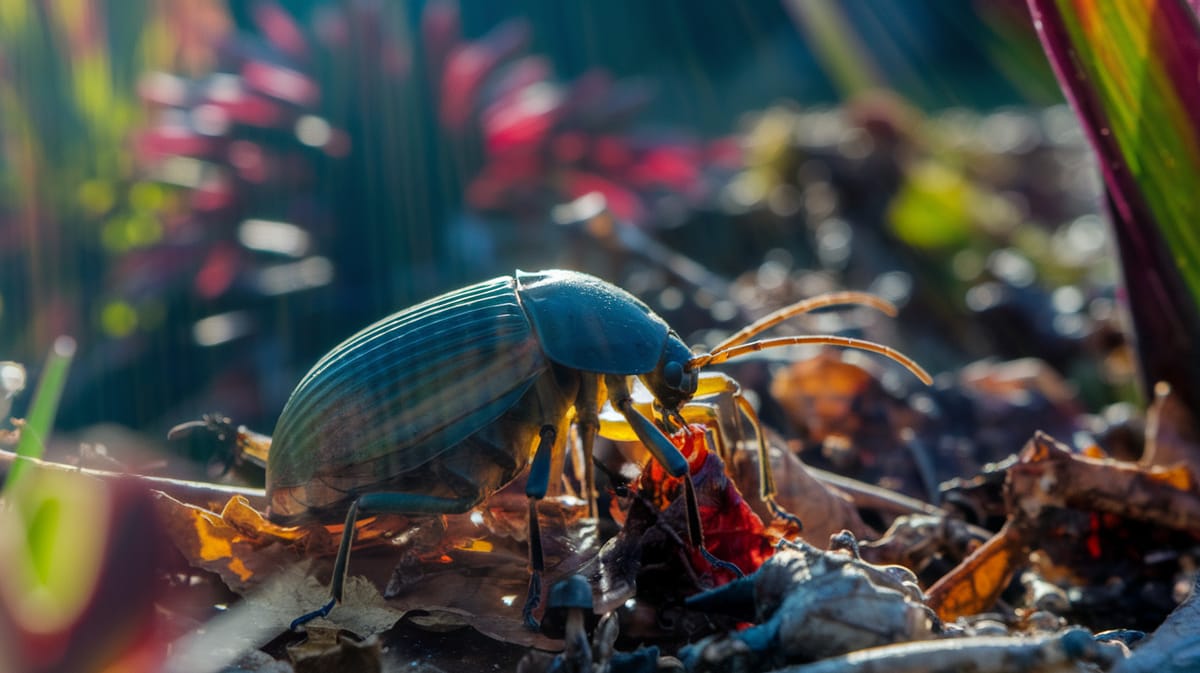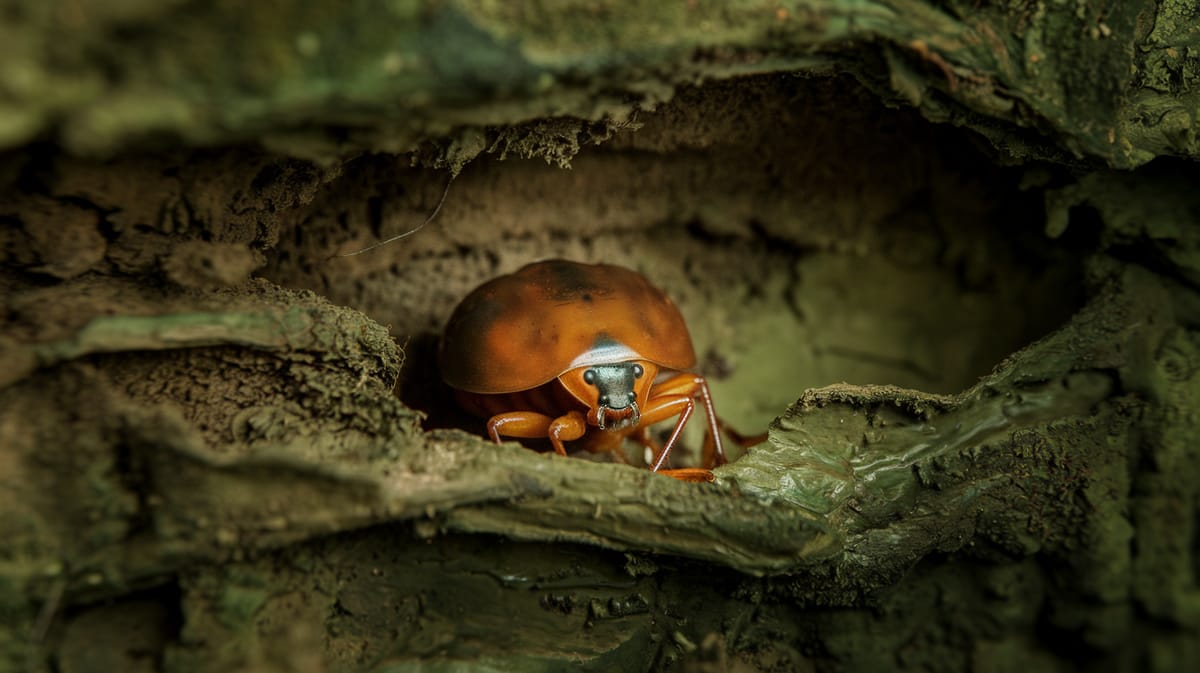Pill Bug
Roly-poly adventurers of the soil, pill bugs play a crucial role in decomposition, turning organic matter into rich soil. These nocturnal crustaceans have a knack for curling into a ball for defense.

Key Insights at a Glance
Did You Know?
Taxonomy & Classification
Pill bugs, known for their unique ability to roll into a ball, are terrestrial crustaceans that thrive in moist environments, playing a crucial role in decomposition. Let's understand the evolutionary journey and classification of these remarkable decomposers.
Species Diversity
The Armadillidium genus includes over 180 species, showcasing a wide range of adaptations to various terrestrial environments across Europe, Asia, and North America.
Ancient Origins
Pill bugs trace back over 300 million years, evolving from marine ancestors and adapting to life on land through critical anatomical changes.
Lifecycle and Growth
A remarkable journey of transformation from Egg to Adult.
Egg
Tiny eggs are laid in a brood pouch, providing protection and moisture until hatching into juveniles.
Juvenile
Juveniles resemble miniature adults and molt multiple times, growing larger after each molt.
Adult
Adults are fully developed, capable of reproduction, and play a role in decomposing organic matter.
Dietary Habits
A decomposer with unique survival strategies, this creature feeds on decaying plant matter, aiding nutrient recycling in ecosystems.
| DIET TYPE | DESCRIPTION |
|---|---|
| Primary Diet | Primarily consumes decomposing leaves, wood, and other organic matter found on forest floors. |
| Secondary Diet | Supplements diet with algae, fungi, and moss, contributing to its role in breaking down organic material. |
| Occasional | Occasionally consumes fresh or living plants and vegetables when organic debris becomes scarce. |

Behaviour and Adaptations
Discover the fascinating traits that help the Pill Bug thrive in its environment.
Roll Defense
Pill bugs curl into a ball to protect their soft undersides from predators.
Moisture Dependence
These insects rely on moist environments to maintain hydration and respiratory function.
Detritus Consumption
Pill bugs break down organic matter, recycling nutrients back into the ecosystem.
Ecosystem Impact
Promoting ecological health through the Pill Bug's vital roles.
Soil Enricher
Decomposes organic matter, enriching soil and promoting plant growth.
Moisture Retainer
Helps maintain soil moisture by breaking down organic debris.
Heavy Metal Regulator
Accumulates and neutralizes heavy metals, reducing soil toxicity.
Conservation Challenges
Addressing key threats impacting Pill Bug survival.
Habitat Destruction
Urbanization and agriculture severely reduce the natural habitats of pill bugs.
Chemical Exposure
Pesticides and pollutants harm pill bug populations and their ecosystems.
Climate Change
Temperature fluctuations disrupt pill bug life cycles and ecosystems.
Frequently Asked Questions
How long do Pill Bug live?
Pill bugs typically live for about two to three years. Their lifespan can vary based on environmental conditions such as moisture and temperature. They reach maturity in about a year and continue to reproduce throughout their life.
What do Pill Bug eat?
Pill bugs primarily eat decaying plant material, which makes them important decomposers in their ecosystem. They feed on organic matter like rotting leaves, wood, and other plant debris, helping to recycle nutrients back into the soil.
Are Pill Bug poisonous?
Pill bugs are not poisonous. They do not pose any threat to humans or pets. While they might look similar to some harmful pests, they are harmless and play a beneficial role in their environment.
Are Pill Bug endangered?
Pill bugs are not considered endangered. They are quite common in many parts of the world and adapt well to various habitats, especially those with moist conditions. Their widespread presence and ability to thrive in different environments help maintain their population.
What do Pill Bug symbolize?
Pill bugs often symbolize resilience and adaptability because they can thrive in challenging environments. In some cultural contexts, they may also represent grounding and protection due to their defensive rolling behavior when threatened.
Do Pill Bug bite?
Pill bugs do not bite. They have no means to harm humans or animals and are primarily detritivores, focusing on decomposing organic material. Their mouthparts are not designed for biting living creatures.
What color are Pill Bug?
Pill bugs are usually gray or brown, with their color helping them blend into their surroundings. Their coloration can vary slightly depending on their environment and species, but they generally maintain a muted, earthy tone.
Does a Pill Bug have wings?
Pill bugs do not have wings. They belong to the order Isopoda, which includes crustaceans that are adapted to life on land. Their body structure is not designed for flight, and they move by crawling on the ground.
What does a Pill Bug look like?
A pill bug has a segmented, oval-shaped body with a hard exoskeleton. It has seven pairs of legs and two antennae. When threatened, it can roll into a ball, resembling a small pill, which is a key characteristic.
Is a Pill Bug an insect?
Despite their appearance, pill bugs are not insects. They belong to the crustacean class, related to shrimp and crabs. Unlike insects, which have three body segments and six legs, pill bugs have multiple segments and seven pairs of legs.
Related Insects
Discover insects with similar characteristics to Pill Bug - including shared habitats, diets, and taxonomic classifications
Share this profile
Help others discover Pill Bug
